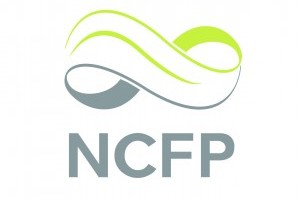Family foundations are shifting from geographic-based focuses to issue-based. Newer organizations, those founded after 2010, are less likely to base commitments on geography (40 percent) than organizations at least 45-years-old (78 percent). Newer foundations are likewise more likely to be committed to specific issues as compared to older foundations, 61 percent to 43 percent.
Foundations that do look at the map while funding tend to keep local, with 60 percent of foundations committed to local causes and 29 percent having regional focuses. By comparison, just 13 percent of foundations have an international focus. Larger foundations, those from where in excess of $1 million was granted in 2014, are more likely to be committed to local as opposed to international goals, 69 percent to 8 percent, than midsize organizations, 57 percent to 30 percent, and smaller organizations giving less than $500,000, 57 percent to 12 percent.
The data comes from a survey of 2,500 family foundations with assets of at least $2 million and giving of at least $100,000 initiated by the National Center for Family Philanthropy (NCFP) and designed by the Urban Institute, both in Washington D.C. J.P. Morgan was the report’s lead sponsor. A benchmark study of this scope had never been done before, according to Jason Born, NCFP’s vice president for programs. Other key findings from the report include:
* Foundations, as a whole, are small and relatively young. Some 69 percent of foundations were founded after 1990 while 70 percent of foundations have total assets of less than $10 million;
* 62 percent of foundations have payout rates between the legal minimum of 5 percent and 6 percent. Another 30 percent have payout rates in excess of 6 percent, including 15 percent that give more than 10 percent of corpus;
* 86 percent of the youngest family foundations, those founded since 2010, have active donors while only 21 percent of older family foundations, those founded before 1970, have active donors. 20 percent of the youngest foundations have established a limited lifespan while only 3 percent of older foundations have done so; and,
* 56 percent of foundations are engaging younger family members into the organization, including 68 percent of older organizations.
Born attributed larger family foundations tending to be more locally focused to the fact that they also tend to be older, sometimes originating from a family-owned local business. A trend toward more issue-based philanthropy has stemmed from a desire to see greatest results. “Every family foundation is different, just like every family is different, but I think, in the age of the internet which we have been in for many years now, there’s a lot of information now that if you really want to make a difference, you really need to narrow your focus and find your focus,” Born said.
NCFP leadership is excited by the fact that many foundations are exceeding the mandated 5 percent payout rate, Born said. Larger payouts might be a product of expected increases in assets, according to Born, with about half of foundations anticipating an increase in assets during the next four years and just 5 percent expecting a reduction. Foundations founded after 1990, in particular, are preparing for growth with 60 percent anticipating an increase in assets.
Foundations are diverse in their contribution means, according to Elizabeth Boris, director of the Urban Institute’s Center on Nonprofits and Philanthropy. About 30 percent of foundations contribute to donor-advised funds or community foundations, while 20 percent contribute through the family business. A focus on family in philanthropy is illustrated in the number of foundations boards seeking to incorporate younger members, Boris said. “As the younger members of the family are brought into philanthropy, hopefully they will continue to be a renewal force in philanthropy,” Boris said. “I think it’s a very positive trend.”
NCFP plans to conduct follow-up surveys every three to four years to track trends, according to Born. In the coming weeks, NCFP plans to announce a series of regional conversations to share and discuss the survey’s findings with leaders in various communities, Born said. To request a copy of the survey, visit ncfp.org.
